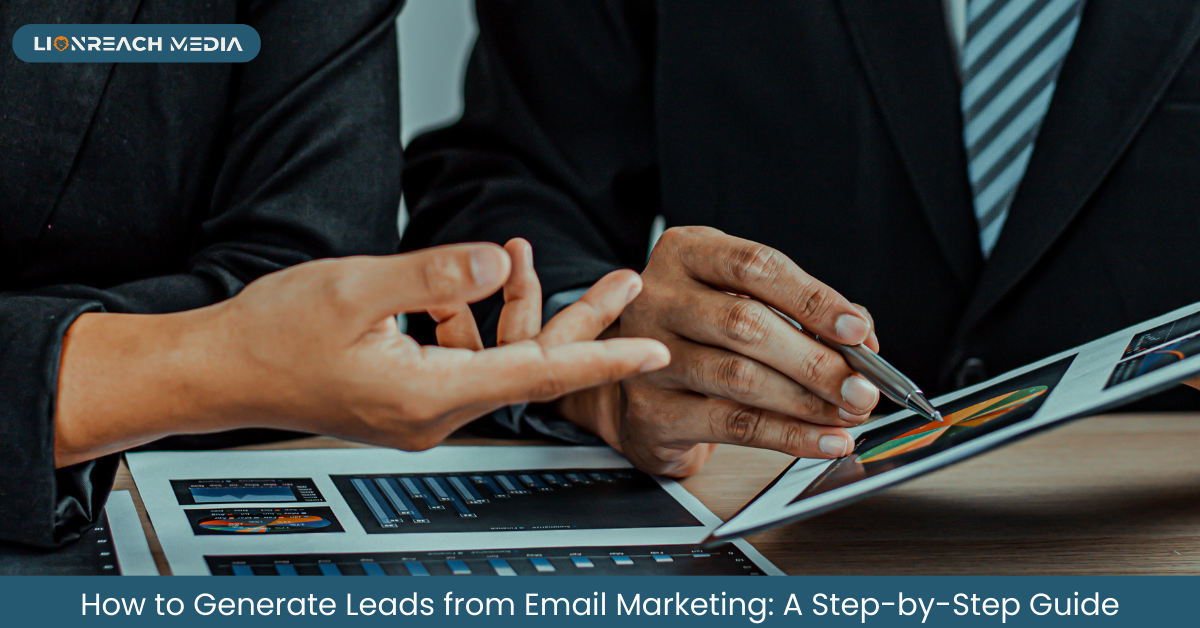
How to Generate Leads from Email Marketing: A Step-by-Step Guide
In the digital age, where marketing channels seem to evolve almost daily, email marketing remains a reliable and effective way to generate leads. When executed strategically, email marketing can help you build relationships with potential customers, nurture leads, and convert them into paying clients. In this blog post, we’ll explore a step-by-step guide on how to generate leads from email marketing.
1. Build a Quality Email List:
The foundation of successful email marketing is a high-quality email list. You want to target individuals who are genuinely interested in your products or services. Here’s how to do it:
- Opt-in Forms: Place opt-in forms prominently on your website and landing pages. Offer incentives like free e-books, discounts, or newsletters to encourage visitors to subscribe.
- Segmentation: Categorize your subscribers based on their interests, behaviors, and demographics. This allows you to send highly targeted content.
- Data Hygiene: Regularly clean your email list to remove inactive or unengaged subscribers. This ensures your emails reach an interested audience.
2. Create Compelling Content:
The content of your emails is what will engage and retain your subscribers. Focus on crafting content that is:
- Relevant: Tailor your emails to the specific needs and interests of each segment.
- Valuable: Provide informative, entertaining, or educational content that your subscribers find useful.
- Consistent: Maintain a regular email schedule to keep your audience engaged.
3. Personalization is Key:
Personalization is a powerful tool in email marketing. Use your subscribers’ names and segment data to create a personalized experience. A few ways to implement personalization include:
- Personalized Subject Lines: Use the recipient’s name or reference their previous interactions with your brand.
- Dynamic Content: Display content relevant to each subscriber’s interests.
- Behavioral Triggers: Send emails based on subscriber actions, such as abandoned cart reminders or post-purchase follow-ups.
4. A/B Testing:
Email marketing is not a one-size-fits-all strategy. To optimize your efforts, conduct A/B tests on different elements, including:
- Subject Lines: Test different subject lines to see which ones result in higher open rates.
- Content Layout: Experiment with the placement of images, calls-to-action, and text to see what resonates with your audience.
- Send Times: Test different days and times to determine when your subscribers are most active.
5. Call to Action (CTA):
Every email should have a clear and compelling call to action. Whether it’s signing up for a webinar, downloading an e-book, or making a purchase, your CTA should be prominent and enticing.
6. Lead Nurturing:
Leads are often at different stages of the sales funnel. Use email marketing to nurture these leads by providing them with the information they need to make an informed decision. This can involve sending follow-up emails, case studies, or success stories.
7. Monitor and Analyze:
Regularly track the performance of your email campaigns. Pay attention to metrics like open rates, click-through rates, conversion rates, and unsubscribe rates. This data will help you refine your email marketing strategy over time.
8. Compliance with Regulations:
Ensure your email marketing complies with relevant laws and regulations, such as the CAN-SPAM Act in the United States and GDPR in Europe. Obtain consent, provide an easy opt-out mechanism, and include your physical address in each email.
9. Engage with Feedback:
Encourage feedback from your subscribers and actively engage with their responses. This not only helps you improve your email marketing strategy but also builds trust and loyalty.
In conclusion, email marketing remains a potent tool for lead generation when executed correctly. Building a high-quality email list, creating compelling content, personalizing your emails, and nurturing leads are all crucial steps in the process. Remember to continually monitor and adjust your email marketing strategy to adapt to the evolving needs and preferences of your audience. By following these steps, you can effectively generate leads and convert them into loyal customers through email marketing.
